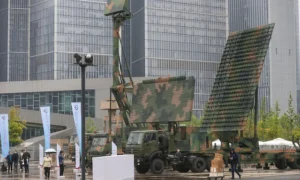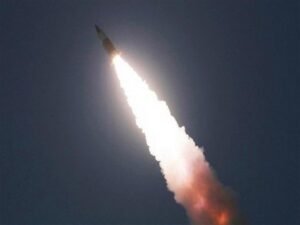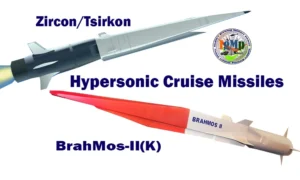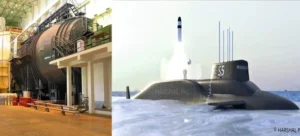Source : Firstpost
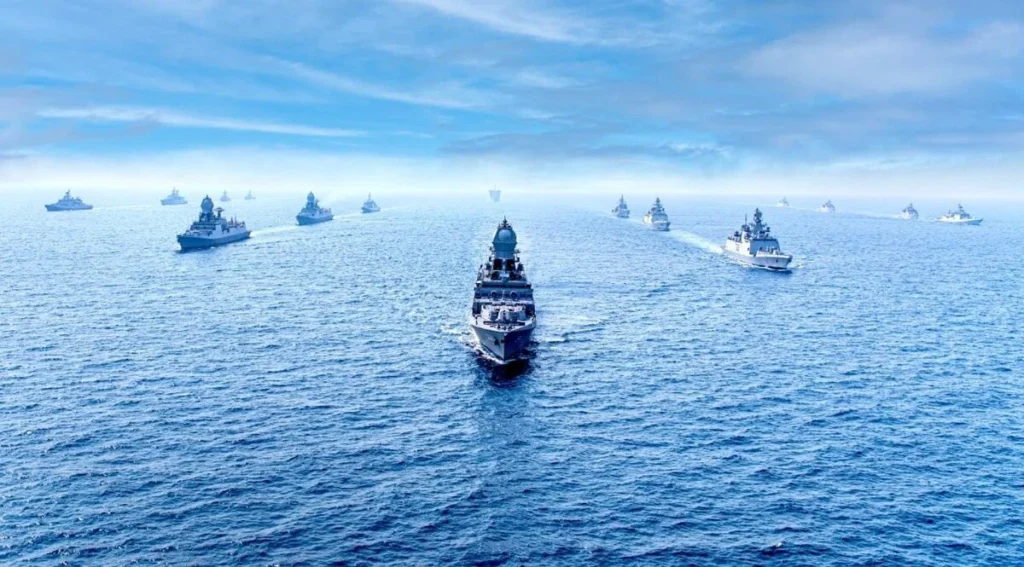
By Air Marshal (Retd.) Anil Chopra
External Affairs Minister S Jaishankar stated that the Indian Navy (IN) has deployed 10 ships in the Gulf of Aden region due to a dual challenge. India faces both piracy and missile drone issues. In the past few days, one of our ships successfully extinguished a fire and rescued the crew of a tanker, which had fallen victim to a drone attack. Additionally, we rescued Pakistani and Iranian fishermen from pirates. Jaishankar emphasized that India’s greater capability, influence, and reputation warrant proactive assistance to others in difficult situations, earning the country great respect.
The Red Sea crisis is a spillover from the Israel-Hamas war and the complex dynamics in Yemen. The Yemen-based Houthis have initiated attacks on commercial shipping in the Bab-el-Mandeb strait. The general area encompassing the Red Sea, Gulf of Aden, Gulf of Aqaba, Southern Israel, and the airspace of Saudi Arabia and Egypt is directly affected. This disruption has led to the interference of international maritime trade in the Red Sea. In response, the US, supported by many of its Western and Asian allies, launched Operation Prosperity Guardian.
Who are Houthis?
The Houthi movement is a Shia Islamist political and military organisation that originated in Yemen in the 1990s. Predominantly composed of Zaidi Shias, largely from the Houthi tribe, the movement emerged as an opposition to Yemeni President Ali Abdullah Saleh, whom they accused of corruption and being supported by Saudi Arabia and the United States. In 2003, inspired by the Lebanese Shia political and military organisation Hezbollah, the Houthis adopted their official slogan against the United States, Israel and the Jews.
The Houthi movement is led by the Supreme Political Council (SPC), a largely unrecognised executive body. Houthis are primarily backed by Iran, Iran-backed Hezbollah and Iraqi militias, with alleged support from North Korea. The Houthi movement attracts followers in Yemen by presenting themselves as fighters for economic development and the end of the political marginalisation of Zaidi Shias. They have a complex relationship with Yemen’s Sunnis.
The organisation participated in the Yemeni Revolution of 2011. In late 2014, the Houthis reconciled with Saleh, and with his assistance, they took control of the capital city of Sanaa. This takeover prompted a Saudi-led military intervention resulting in the ongoing civil war, which included missile and drone attacks against Saudi Arabia and its ally, the United Arab Emirates (UAE). Following the outbreak of the 2023 Israel-Hamas war, the Houthis began firing missiles at Israel and attacking ships off Yemen’s coast in the Red Sea, claiming solidarity with the Palestinians and aiming to facilitate the entry of humanitarian aid into the Gaza Strip.
Currently, the Houthis control the Yemeni capital Sanaa and a significant part of western Yemen overlooking the Red Sea. Their long-term goal is to govern the entire Yemen. The conflict in Yemen is widely viewed as a front in the Iran–Saudi Arabia proxy war.
Red Sea crisis
The Red Sea crisis, also known as the United States-Iran proxy war, began on 19 October, 2023, when the Houthis initiated a series of attacks, targeting Southern Israel and the ships in the Red Sea that they claimed were linked to Israel. Unfortunately, some ships with no apparent connection to Israel were also targeted.
In the ongoing Israel-Hamas war, the Houthis, aligned with Hamas, launched attacks targeting Israel. They employed missiles and unmanned aerial vehicles (UAVs), some of which were intercepted by Israel over the Red Sea using the Arrow missile defence system. Some missiles have also been intercepted by the United States Navy, the French Navy and the Israeli Air Force.
Houthi militants have also fired on merchant vessels of various countries in the Red Sea as they passed off the coast of Yemen, in the Bab-el-Mandeb strait, a chokepoint of the global economy that leads to the Suez Canal. This has resulted in hundreds of cargo ships and tankers being rerouted around the southern tip of Africa to avoid the attacks in the Red Sea. This has meant a huge increase in time and cost for all, including India. The United States has repeatedly struck the Houthis, launching a series of strikes alongside the British military since 11 January, 2024.
To end the attacks in the Red Sea, the Houthis have demanded a ceasefire in Gaza and an end to Israel’s blockade of the Gaza Strip.
Houthi weapons
Houthi weapons primarily originate from Iran. They are known to utilise surface-to-surface missiles, artillery rockets, loitering munitions and unmanned aerial vehicles (UAVs). The distance between Western Yemen and Israel is approximately 1,800 km. The Houthis possess several missiles and UAVs capable of reaching Israel from Yemen, including the Toufan surface-to-surface missile (1,800 km), Iranian Soumar family Cruise missiles (2,000 km), Quds-2 missile (1,350 km), Samad UAVs/loitering munitions (1,800 km), and Wa’id loitering munition drones (2,500 km).
Military action timeline and engagements
On 19 October, 2023, the United States Navy (USN) destroyer USS Carney shot down three land-attack cruise missiles and 15 Houthi drones heading toward Israel, launched from Yemen. This marked the first action by the US military to defend Israel since the outbreak of the war. Another missile was reportedly intercepted by Saudi Arabia.
In late October, a failed loitering munitions attack occurred when one drone fell in Taba, Egypt, injuring six, and a second was shot down. Additionally, the Arrow system intercepted a ballistic missile over the Negev desert above Earth’s atmosphere, making it the first time it has been used in the Israel-Hamas war and the first instance of space warfare in history. Other platforms intercepted several cruise missiles fired from the Red Sea toward Eilat. One cruise missile was shot down by an Israeli F-35i Adir fighter jet.
In early November, while the Israeli Defence Forces (IDF) continued to intercept missiles and drones, a US MQ-9 Reaper drone was shot down off the coast of Yemen by Houthi air defences on 8 November. The very next day, a Houthi missile was intercepted by an Arrow 3 missile, marking the first time it was used in a conventional interception. More such intercepts followed, with Israeli F-35i intercepting cruise missiles. On 23 November, 2023, the destroyer USS Thomas Hudner shot down several attack drones launched from Yemen. More US ships like destroyer USS Carney and USS Mason moved in to take on drones and missiles. The French Navy’s frigate Languedoc also began operating in the Red Sea. Meanwhile, Israeli airstrikes started hitting targets such as Houthi arms depot in Sana’a.
In early December, Houthis launched many more ballistic missiles. On December 18, 2023, the Indian Navy stationed the destroyer INS Kolkata in the Gulf of Aden for maritime security. The destroyer INS Kochi was already deployed in the region to counter Somali pirates. On December 26, the Indian Navy deployed the destroyers INS Mormugao and Visakhapatnam in the Arabian Sea after an Israel-affiliated merchant vessel was struck off the Indian coast. These deployments were independent of the American-led operations. Later, the Pakistan Navy deployed two Tughril-class frigates, PNS Tughril and Taimur, in the Arabian Sea. As the US moved more ships, including USS Dwight D. Eisenhower, USS Gravely and HMS Diamond, Houthis continued drone and UAV attacks. US Navy SEALs have also been active in raiding Houthi-bound ships. The USA and the UK have intensified their airstrikes on targets in Yemen. The strength of American AWACS and flight refueling aircraft has increased considerably. Denmark’s frigate HDMS Iver Huitfeldt is already on its way to the Red Sea. Americans have been alleging direct involvement of Iran in anti-shipping operations, in addition to direct support to the Houthis. Militaries are regularly having to respond to merchant ships that are being attacked. Strikes on Iranian targets are now becoming imminent. Clearly, a major showdown is now highly likely.
Global commercial impact
A few hundred container ships have already been rerouted to go around Africa, each adding around 6,500 kilometres to the trip distance. This route incurs an extra 10 days, requires more fuel, and demands additional crew time. Shipping prices have increased, with the average cost of transporting a 40-feet (12-metre) container on a cargo ship rising by 161 per cent to $3,964 on 25 January from $1,521 on 14 December.
The insurance costs for commercial ships going through the Red Sea have also increased, with Israeli ships experiencing a 250 per cent rise. Some are unable to obtain any insurance, and there are costs associated with delays in goods deliveries.
Many shipping companies have announced the suspension of import and export services to Israel due to risk and safety considerations. Qatar has halted tankers of liquefied natural gas through the Bab al-Mandeb Strait. Considering that Qatar is Europe’s second-largest supplier of LNG, this has raised concerns as the gas is required for winter heating in Europe.
While Israelis may face delays in the supply chain and price hikes, the effects on the Egyptian economy are more severe. Shipping through the Suez Canal contributes nearly $9.4 billion to the Egyptian economy, which is already suffering from a debt crisis worsened by trade disruptions with Israel due to the war in Gaza.
Commercial impact on India
Other than increased Somali piracy, India is heavily reliant on the Red Sea route through the Suez Canal for its trade with Europe, North America, North Africa, and the Middle East. These regions accounted for about 50 percent of India’s exports of $217 billion and about 30 percent of imports of $205 billion per year, according to CRISIL Ratings. It could cost the country more than $30 billion in exports by March 31st. Of late, Russia has been a key supplier of crude oil to India. Fortunately, that does not transit through the Red Sea. The crisis is impacting a few of India’s major exports, including Basmati rice, tea and buffalo meat. The government has set up an inter-ministerial panel to monitor the crisis, and the Indian Navy has made enhanced deployments in the region to secure our shipping.
Indian Navy’s great rescue efforts
The increase in piracy off Somalia’s coast is reportedly linked to the overall disruption in maritime security due to the series of Houthi attacks on ships in the Red Sea.
On 29 January, the Indian Navy rescued 19 Pakistani sailors after their fishing vessel was hijacked by pirates off Somalia’s coast. This marked the second rescue operation in 36 hours by the Indian warship INS Sumitra. Just a few hours earlier, the ship had rescued the 17-member Iranian crew of a vessel that was also hijacked by pirates. INS Sumitra has been deployed for maritime security operations along the east coast of Somalia and the Gulf of Aden.
Earlier, on 26 January, the Indian Navy deployed its warship INS Visakhapatnam in the Gulf of Aden in response to a distress call from Marlin Luanda, a tanker with links to the UK that was on fire for several hours after being hit by a missile fired by the Houthis. French and US naval ships also provided assistance to the vessel. In early January, Indian Navy commandos had rescued 21 crew members from a Liberian-flagged ship that was attacked by pirates off the Somalian coast.
Military and diplomatic options ahead
Israeli operations in Gaza have resulted in the deaths of over 25,000 Palestinians. Despite the ground offensive, Hamas remains heavily entrenched in South Gaza and is attempting to gain control in the north. The Israelis have acknowledged that 80 per cent of the tunnel network remains intact. While Americans and some Western countries continue to support Israel, there is increasing pressure to call for a ceasefire. Backchannel discussions are ongoing, and Israeli operations cannot continue indefinitely. A cessation of hostilities may slow down the Houthis, but Israel must prevent a recurrence of another “October 07”. The commitment to finish Hamas, however, seems elusive.
Militarily, all arms supplies from Iran to the Houthis must be halted. Iranian ships may need to be targeted. The Iranian Islamic Revolutionary Guard Corps (IRGC) has stationed missile and drone trainers and operators in Yemen. The Quds Force has overseen the transfer of attack drones, cruise missiles and medium-range ballistic missiles. These may have to be targeted within Iran, although direct attacks on Iranian soil could escalate the situation.
If military supplies are coming from North Korea, they would need to be intercepted in shipping lanes. Even when the United Nations Security Council (UNSC) adopted a resolution on 10 January, demanding a cessation of Houthi attacks on merchant vessels, the Houthis intensified their attacks. Meanwhile, the Houthis insist that “Our battle aims to support the Palestinian people and has no other goals”, stating that their operations would cease once food and medicine reach all of Gaza. Perhaps some compromise can be worked out, but in the long term, both Hamas and the Houthis need to be brought under control. Even the Somali pirates will have to be dealt with. European nations would also have to address protests from increasing Muslim populations in their countries, and India would have to secure its trade and minimize the impact.
The writer is Director General, Centre for Air Power Studies. Views expressed in the above piece are personal and solely that of the author. They do not necessarily reflect Firstpost’s views.


